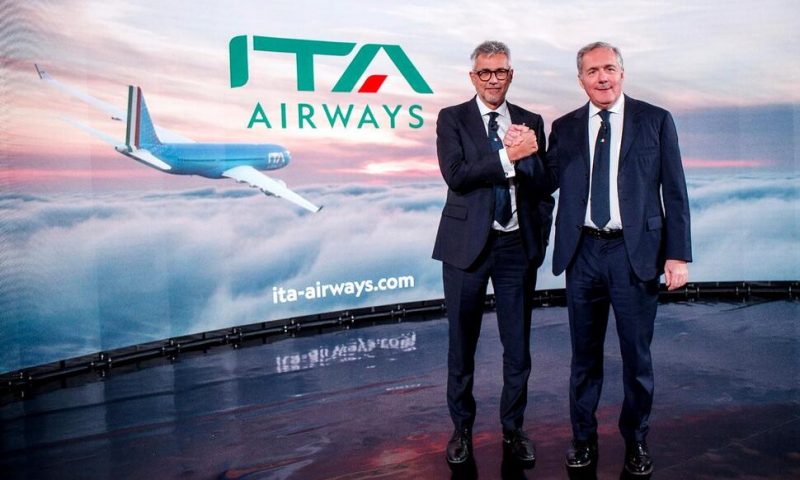After Alitalia’s Demise, ITA Airline Launches With New Look
ROME — Italy’s new national airline, ITA, flew its inaugural flights Friday and unveiled its brand and logo, recycling the red, white and green of its Alitalia origins as it tries to chart a new future for the troubled sector.
ITA, or Italy Air Transport, officially launched after the bankrupt Alitalia landed its final flights Thursday night, ending a 74-year business history that has been marred in recent years by a series of financial crises.
The runup to Alitalia’s formal demise was marked by protests and strikes because the much smaller ITA Airways is only hiring around a quarter of Alitalia’s more than 10,000 employees.
ITA planes will be royal blue with Alitalia’s trademark “tricolore” on the tail. The Italian national sports team colors are blue, and company officials said Friday that the color scheme chosen for the new aircraft aims to make ITA “azzurri” — the team nickname — too.
Even though ITA paid 90 million euros (over $104 million) for the rights to the Alitalia brand and website, the new airline is called ITA Airways and has its own website and a new frequent flier program, called “Volare” (“Fly”).
“Discontinuity doesn’t mean denying the past, but evolving to keep up with the times,” ITA President Alfredo Altavilla said in a statement.
The first ITA flight was the 6:20 a.m. from Milan’s Linate airport to Bari.
In all, the company is flying to 44 destinations and aims to increase that number to 74 in four years.
Among its routes, ITA plans to operate flights to New York from Milan and Rome, and to Tokyo, Boston and Miami from Rome. European destinations from Rome and Milan’s Linate airport will also include Paris, London, Amsterdam, Brussels, Geneva and Frankfurt, Germany.
ITA has 52 planes that it says will grow to 105 in the same period and is pointing to next-generation aircraft that use sustainable, alternative fuel sources.
The company launched with 2,800 employees — 70% of them from Alitalia — and said it expects to increase its size to 5,750 by 2025.

